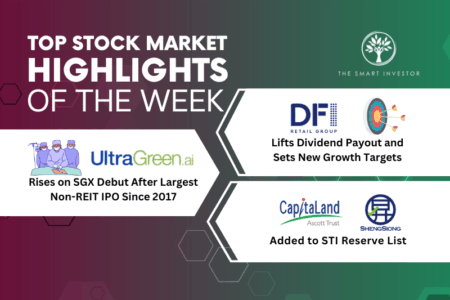After first surpassing the trillion-dollar milestone in 2023, NVIDIA Corp (NASDAQ: NVDA) has cemented itself as a dominant player in the semiconductor space.
However, recent geopolitical tensions and US-first trade policies have led to fears that the firm may not sustain its growth streak.
Nonetheless, Nvidia pulled through in its latest earnings report for the second quarter of its financial year 2026 (2Q FY2026) with a better-than-expected performance.
The company’s relentless innovation in developing high-performance semiconductors means it’s poised to maintain its leadership position in the growing artificial intelligence (AI) market.
Robust headline financials
For 2Q FY2026, Nvidia reported a 56% year-on-year (YoY) jump in revenue to US$46.7 billion.
The tech giant also had a surge in net income of 59% YoY to US$26.4 billion.
The lion’s share of Nvidia’s growth came from the Data Center segment, where revenue grew 56% YoY to US$41.1 billion. High demand for reasoning AI models led to derived demand for Nvidia’s products in the Data Center segment.
The company’s Gaming and AI PC segment enjoyed revenue growth of 49% YoY to US$4.3 billion. One of the contributors of this growth was the launch of the GeForce RTX 5060 desktop GPU. This Blackwell-powered gaming GPU became the fastest ramping x60-class GPU in Nvidia’s history.
Resilient AI moat and ecosystem
Although Nvidia is most known for its chips, its moat comes from its products spanning almost every layer of the AI infrastructure stack. This vertical integration includes networking platforms and software.
Mellanox, acquired by Nvidia in 2020, provides high-performance networking for data centers. This networking technology allows GPUs and different servers to communicate as fast as possible, which supports the training of large AI models.
Furthermore, Nvidia has its own proprietary programming software, CUDA. CUDA is optimised for GPU computing and accelerates the development of AI frameworks. CUDA gives developers the opportunity to adopt pre-trained AI models and libraries easily without having to write GPU code from scratch.
In my opinion, the more developers use CUDA and create models and libraries, the greater the performance of the CUDA ecosystem, and the faster the adoption rate. This is a network effect in action.
Moreover, with an increasing number of libraries and frameworks supported by CUDA, it also creates high-switching costs for developers, discouraging them from considering other software for AI development.
High-value partnerships
Nvidia has numerous companies adopting its products to build the next wave of AI innovations.
For example, in March this year, Magna, an automotive supplier, announced that it would integrate Nvidia’s DRIVE AGX platform with its solutions to build next-gen automotive technology.
The DRIVE AGX platform, which is developed from Nvidia’s Blackwell GPU architecture, improves Magna’s cabin AI functions and advanced driver assistance systems.
The partnership with Magna expands Nvidia’s existing reach within the automobile industry.
A notable partnership Nvidia recently struck was with OpenAI. In September 2025, OpenAI announced that it would deploy 10 gigawatts of Nvidia systems that represent millions of GPUs over multiple years.
Nvidia plans to invest up to US$100 billion in OpenAI as part of the partnership, with the investments to come in stages as each gigawatt is deployed by OpenAI. The first phase of deployment will start in the second half of 2026.
The OpenAI deal strengthens Nvidia’s role as the backbone of OpenAI’s AI infrastructure.
Competition
Nvidia’s competitors include other large US technology companies such as Advanced Micro Devices Inc (NASDAQ: AMD), Broadcom (NASDAQ: AVGO), and Intel Corp (NASDAQ: INTC).
They are all trying to design chips that can rival Nvidia’s GPUs (in the case of Intel, it’s also manufacturing them).
Nonetheless, they all lack Nvidia’s strong AI developer lock-in that comes with the CUDA ecosystem.
Get Smart: Nvidia’s run may be far from over
Nvidia’s growth seems poised to continue. Its strategic partnerships and software ecosystem, together with its chip design prowess, continue to give it an edge over competitors.
Nonetheless, investors should still be aware of industry headwinds and have disciplined risk management for the long run.
Generative AI is reshaping the stock market, but not in the way most investors think. It’s not just about which companies are using AI. It’s about how they’re using it to unlock new revenue, dominate their markets, and quietly reshape the business world. Our latest FREE report “How GenAI is Reshaping the Stock Market” breaks the hype down, so you can invest with greater clarity and confidence. Click here to download your copy today.
Follow us on Facebook, Instagram and Telegram for the latest investing news and analyses!
Disclosure: Gabriel does not own shares in any of the companies mentioned.





